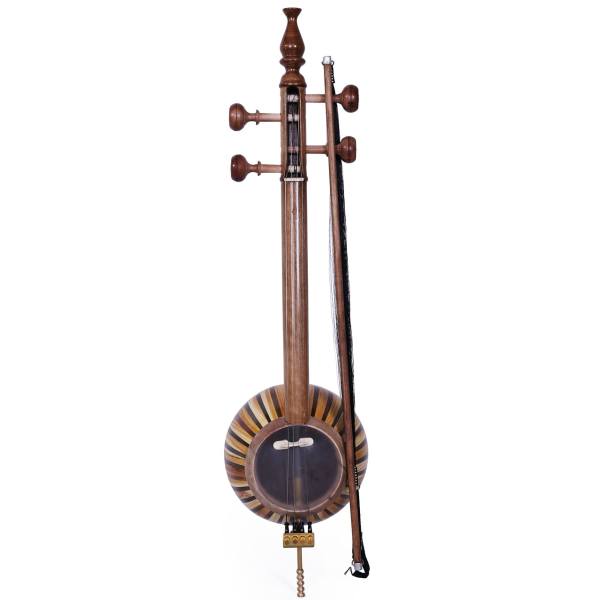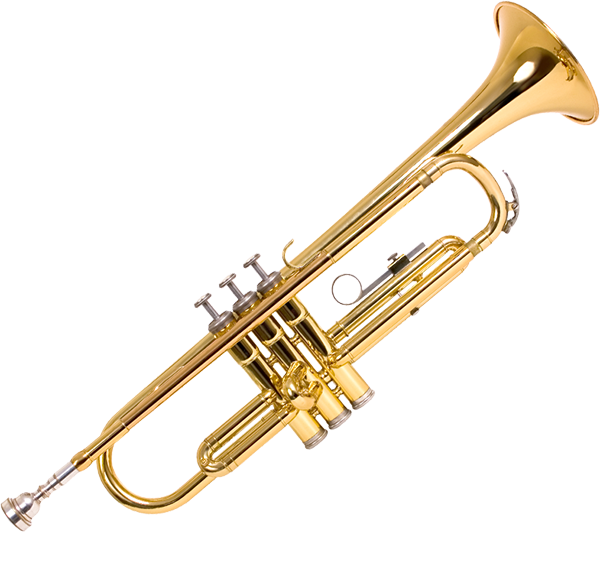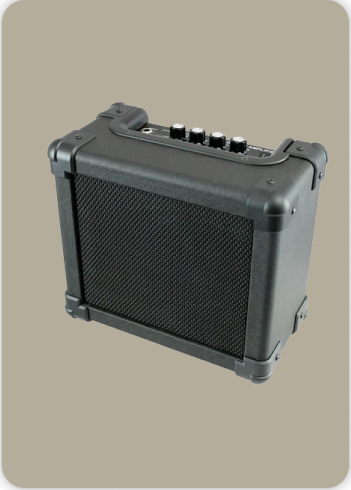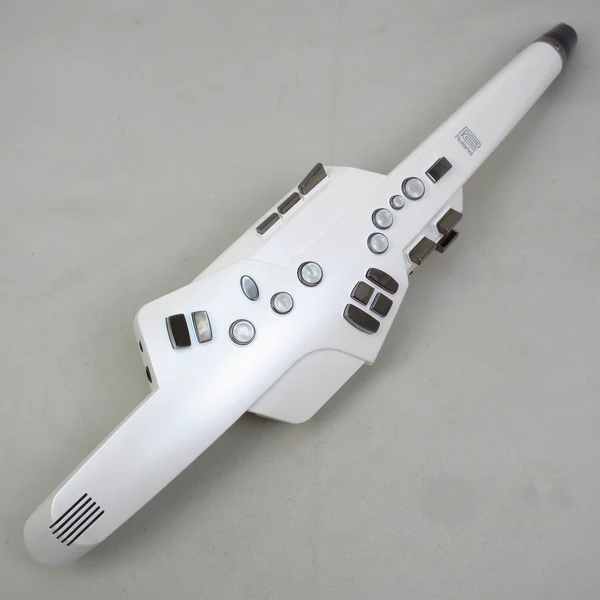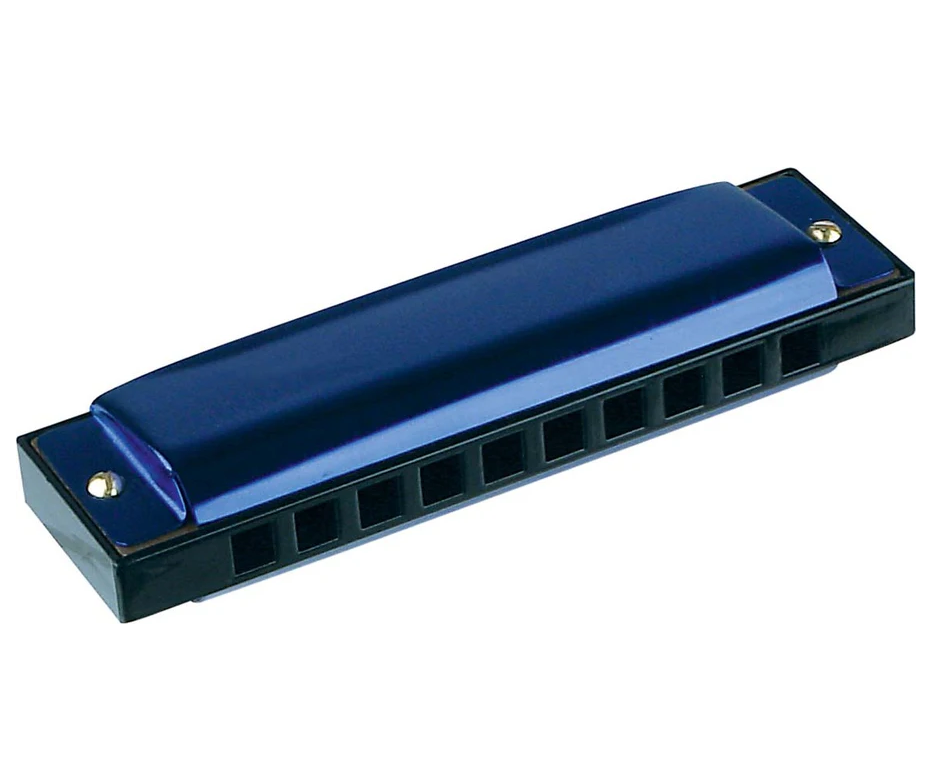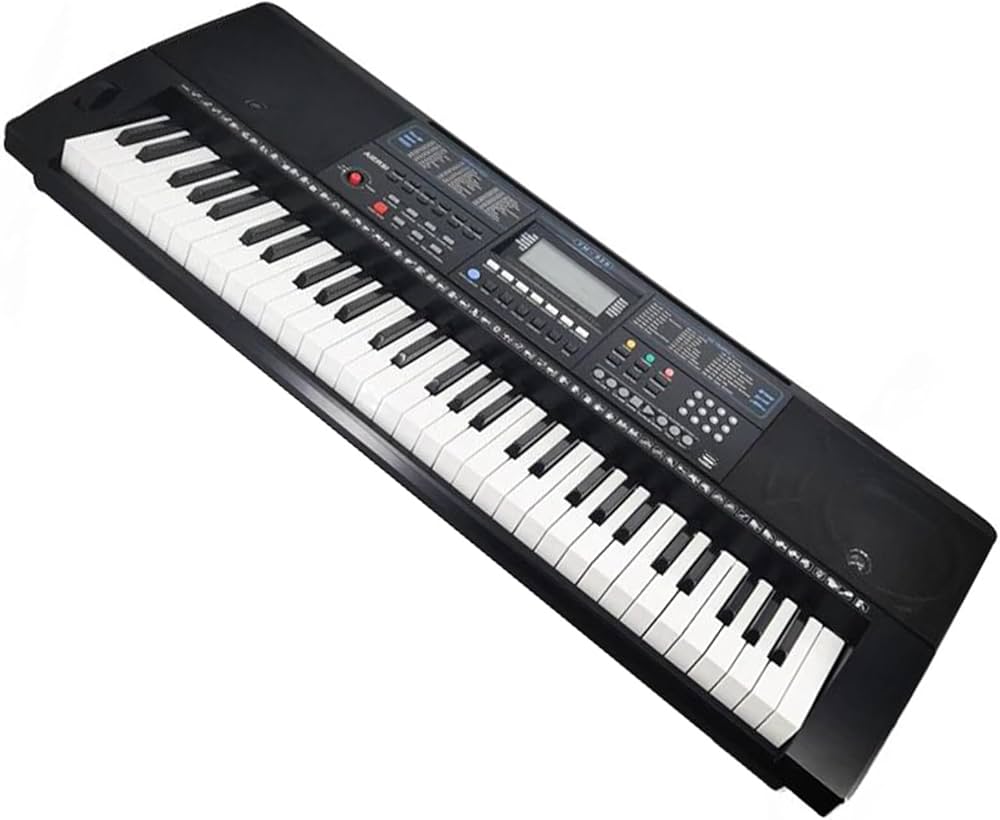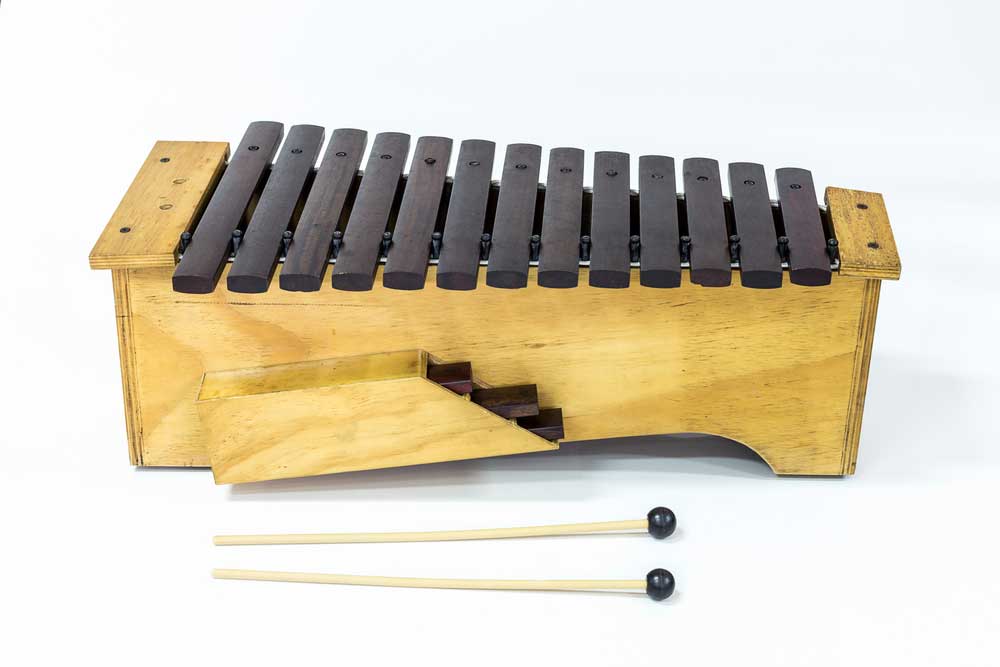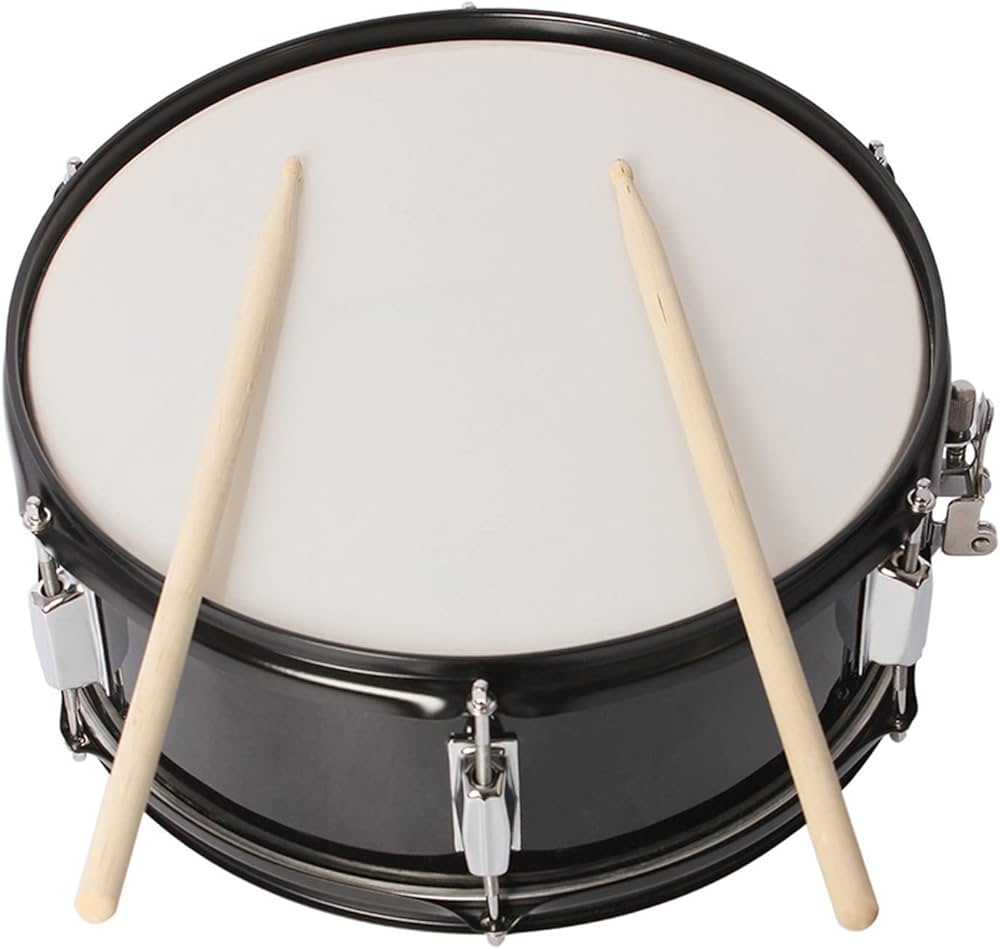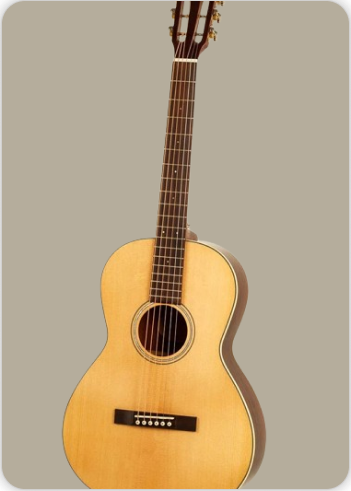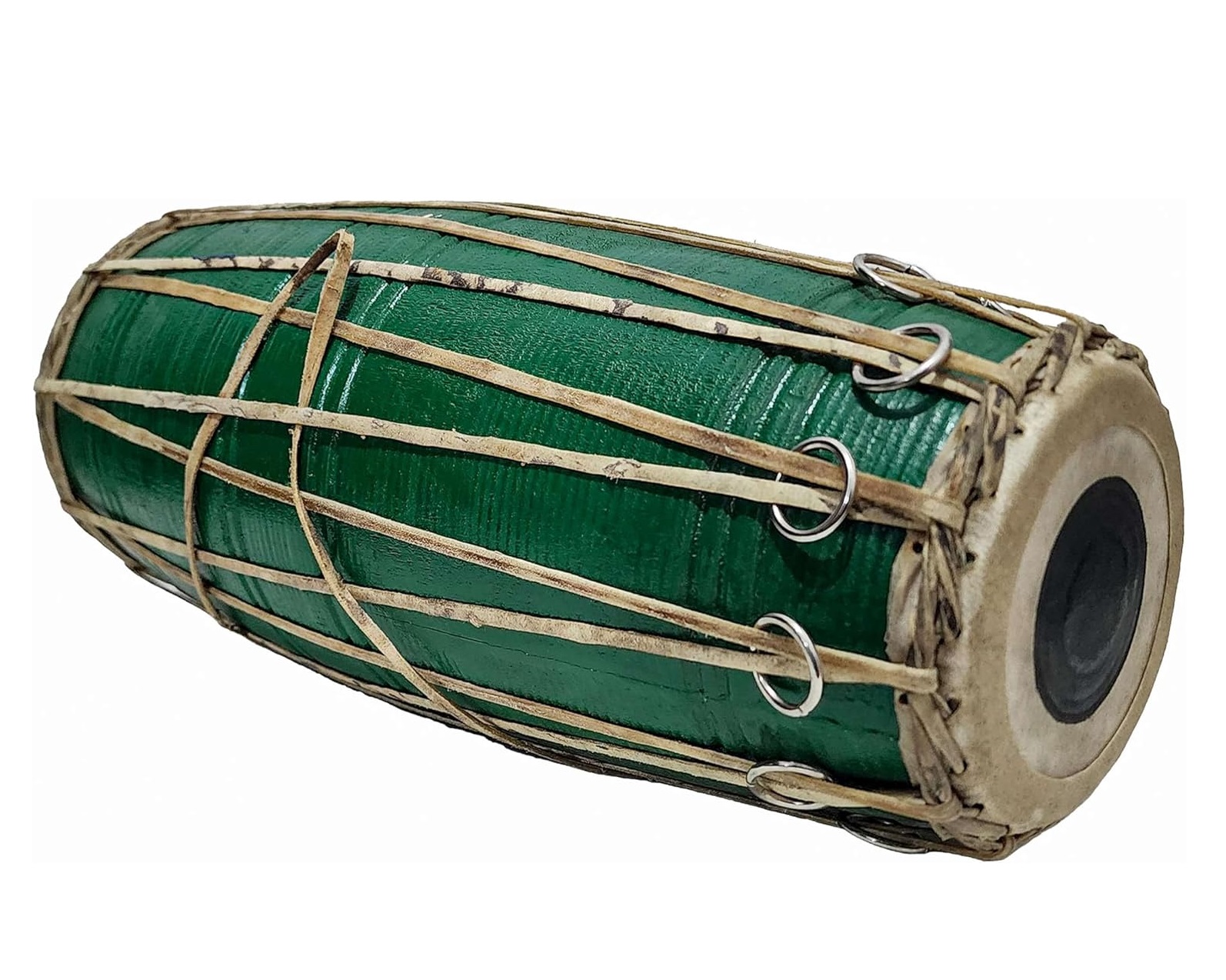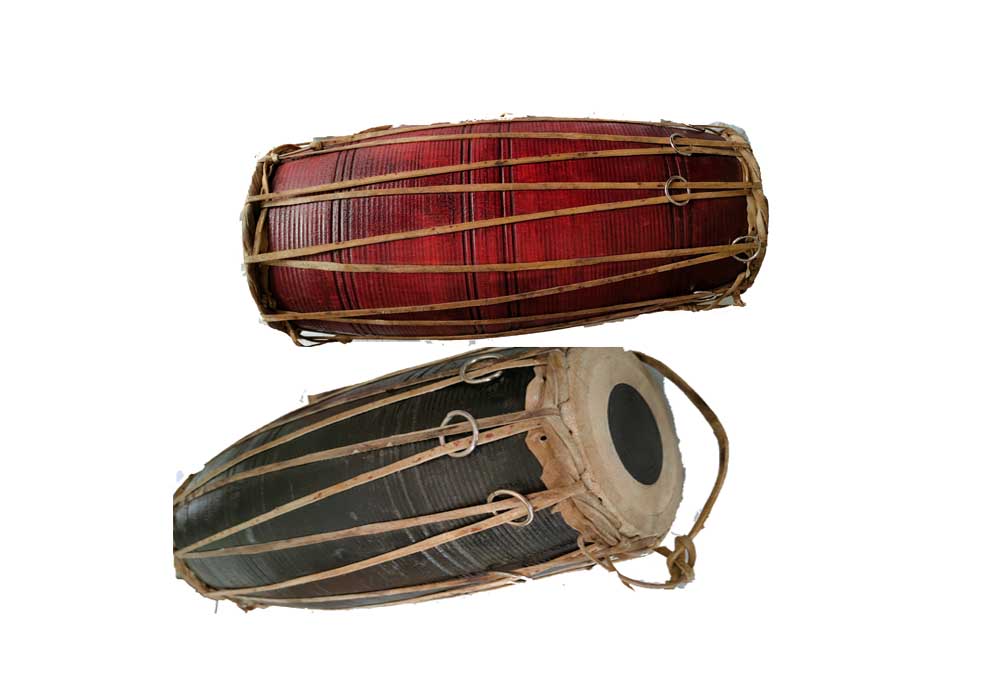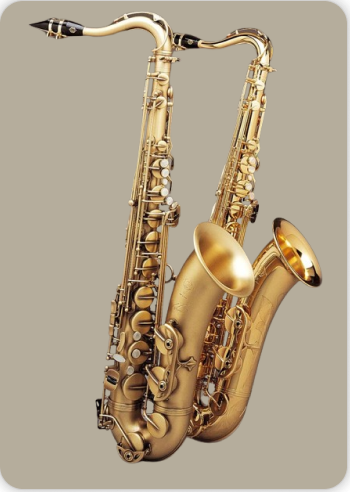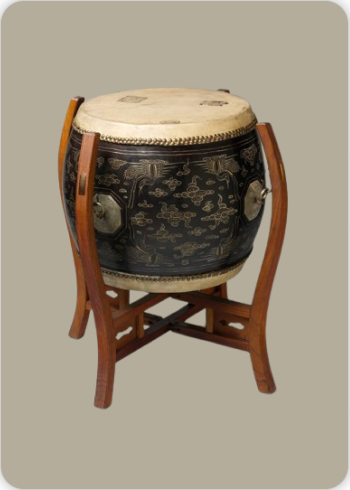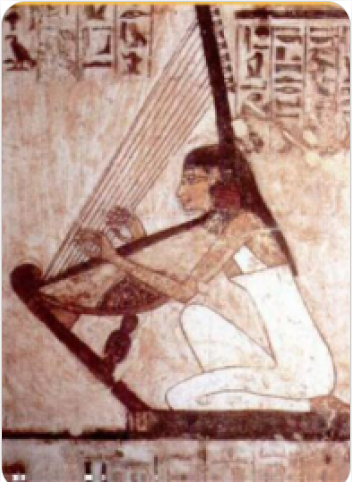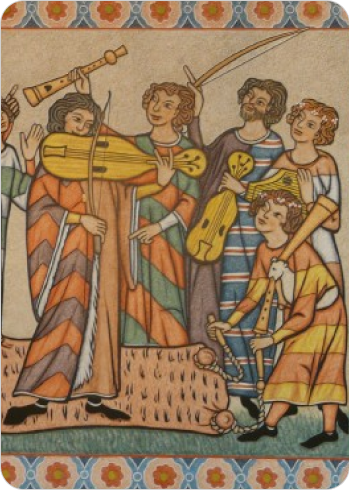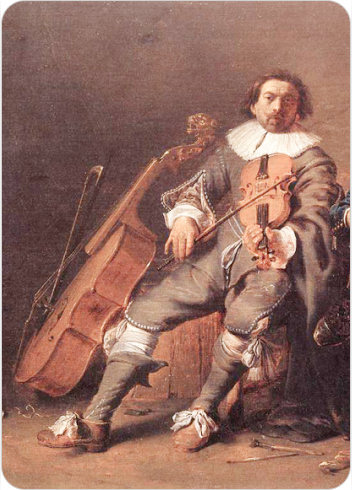Madal
Percussions
Asia
Between 0 and 1000 AD
Video
The Madal is a traditional percussion instrument that holds a significant place in Nepalese music culture. Recognized for its unique sound and versatile playing style, the Madal is predominantly a double-headed drum that produces rhythmic patterns essential for various musical genres, particularly in folk and religious contexts.
The instrument is typically played by hand and is known for its rich, resonant tones that can evoke deep emotional responses from listeners. The Madal’s construction allows it to produce a wide range of sounds, making it an indispensable part of musical ensembles across Nepal. It is classified as a membranophone, which means it produces sound primarily through the vibration of its drumheads when struck. It falls under the Hornbostel-Sachs classification 211.252.12, indicating that it is a double-skinned drum with both heads played directly by hand. The Madal’s design enables it to serve various musical functions, from providing rhythmic accompaniment to enhancing melodic lines in performances.
History
The origins of the Madal can be traced back to ancient times, specifically in the Kathmandu Valley, where it was first utilized in religious and court music. The term “Madal” is derived from the Sanskrit word “Mandala,” which refers to a circular form, symbolizing the cycle of life. This instrument is believed to have evolved from earlier percussion instruments such as the mridanga, mardal, and muraj, with its roots linked to the rich musical traditions of South Asia. Historical accounts suggest that the Madal has been in use since at least the 6th century, during the Malla dynasty, which was known for its patronage of arts and culture. Initially, the Madal was predominantly played by the Magar community, an ethnic group in Nepal known for its vibrant cultural expressions. Over time, its popularity spread throughout Nepal, transcending ethnic boundaries and becoming an essential part of various folk music traditions. By the early 20th century, the Madal had solidified its position as a national instrument, widely recognized for its rhythmic versatility and expressive capabilities. The instrument has maintained its relevance in contemporary music while preserving its traditional roots, reflecting the dynamic evolution of Nepali culture.
Construction
The construction of the Madal is a meticulous process that involves selecting high-quality materials to ensure optimal sound production. Traditionally, the body of the Madal is crafted from hollow wood, often sourced from trees like oak or sal. This wooden shell is cylindrical, with one end smaller than the other; the smaller end is referred to as Daayan, while the larger end is called Bayan. The use of hollow wood allows for a resonant sound that enhances the drum’s tonal qualities. Both ends of the drum are covered with animal skins, typically goat or buffalo hide, which are secured tightly to create a playable surface. A distinctive feature of the Madal is the black spot known as Khari, made from a mixture of iron filings, flour, and eggs. This paste not only adds weight to the drumhead but also helps control sound production by enhancing resonance and tonal clarity. The drum’s body is further reinforced with leather ropes and round rings that secure the skins in place while allowing for tuning adjustments. An additional rope is often attached to facilitate comfortable playing positions; musicians can position the Madal horizontally on their waist or knees, enabling them to strike both heads easily with their hands. This ergonomic design makes it accessible for players of all ages and skill levels.
Types and Features of Madal
While there are no strict classifications within types of Madal, variations exist based on size and regional preferences:
Purvali Madal: This version is generally larger and produces deeper bass tones.
Paschimi Madal: Smaller in size compared to Purvali, it offers sharper sounds suitable for faster rhythms.
Despite these variations, all types maintain similar playing techniques and roles within musical ensembles.
The Madal possesses several defining features that contribute to its unique sound:
Double-headed Design: This allows for varied tonal qualities; one head produces bass while the other creates treble sounds.
Hollow Wooden Body: Enhances resonance and projection of sound.
Animal Skin Heads: The use of natural materials provides warmth and richness to the sound.
Adjustable Tuning: Musicians can modify pitch by tightening or loosening laces or screws.
Portable Size: The compact design makes it easy to carry for performances or gatherings.
These features make the Madal an essential instrument in both traditional and contemporary music settings.
Sound Production
The sound production on the Madal involves striking both heads with hands. The right head typically produces higher pitches when struck near the rim, while striking closer to the center yields deeper tones. The left head offers contrasting sounds that complement those produced by the right side. Players can create intricate rhythmic patterns by varying their striking techniques, such as using different finger placements or applying varying degrees of force. This versatility allows musicians to adapt their playing style to suit various genres and performance contexts.
Playing Methods
Madal players utilize several techniques to create rhythmic patterns:
Traditional Hand Techniques: Players strike both heads directly with their hands, often using different fingers for varied sounds.
Accompaniment Style: In ensemble settings, musicians may coordinate their rhythms with other instruments like flutes or stringed instruments.
Solo Performance: Skilled players can showcase their dexterity through complex solo compositions that highlight both rhythm and melody.
These methods require practice and mastery to achieve proficiency on this dynamic instrument.
Roles in Music
The Madal serves not only as an instrument but also as a vital thread connecting individuals to their cultural roots while adapting to contemporary expressions of identity through music. Its enduring presence across generations highlights its significance within Nepal’s rich musical tapestry.
FAQ
What are some notable features of the Madal instrument?
The Madal features a double-headed design allowing for varied tonal qualities—one head producing bass sounds while the other creates treble tones. Its hollow wooden body enhances resonance, while animal skin heads provide warmth in sound quality. Additionally, adjustable tuning enables musicians to modify pitch according to different musical styles.
How does the Madal contribute to Nepali music?
The Madal serves as a rhythmic foundation in Nepali folk music, providing steady beats essential for vocal performances and dance. Its versatility allows it to adapt across various genres—from traditional folk songs to contemporary fusion music—making it an integral part of cultural celebrations.
Who are some famous players known for their expertise on the Madal?
Several renowned musicians have showcased their skills on the Madal, including Phiroj Shyangden and Bhanu A (Bhanu A), who have popularized its use in modern Nepali music. Their contributions have helped elevate the instrument's status within both traditional and contemporary contexts.
 Links
Links
References
Other Instrument
Categories
